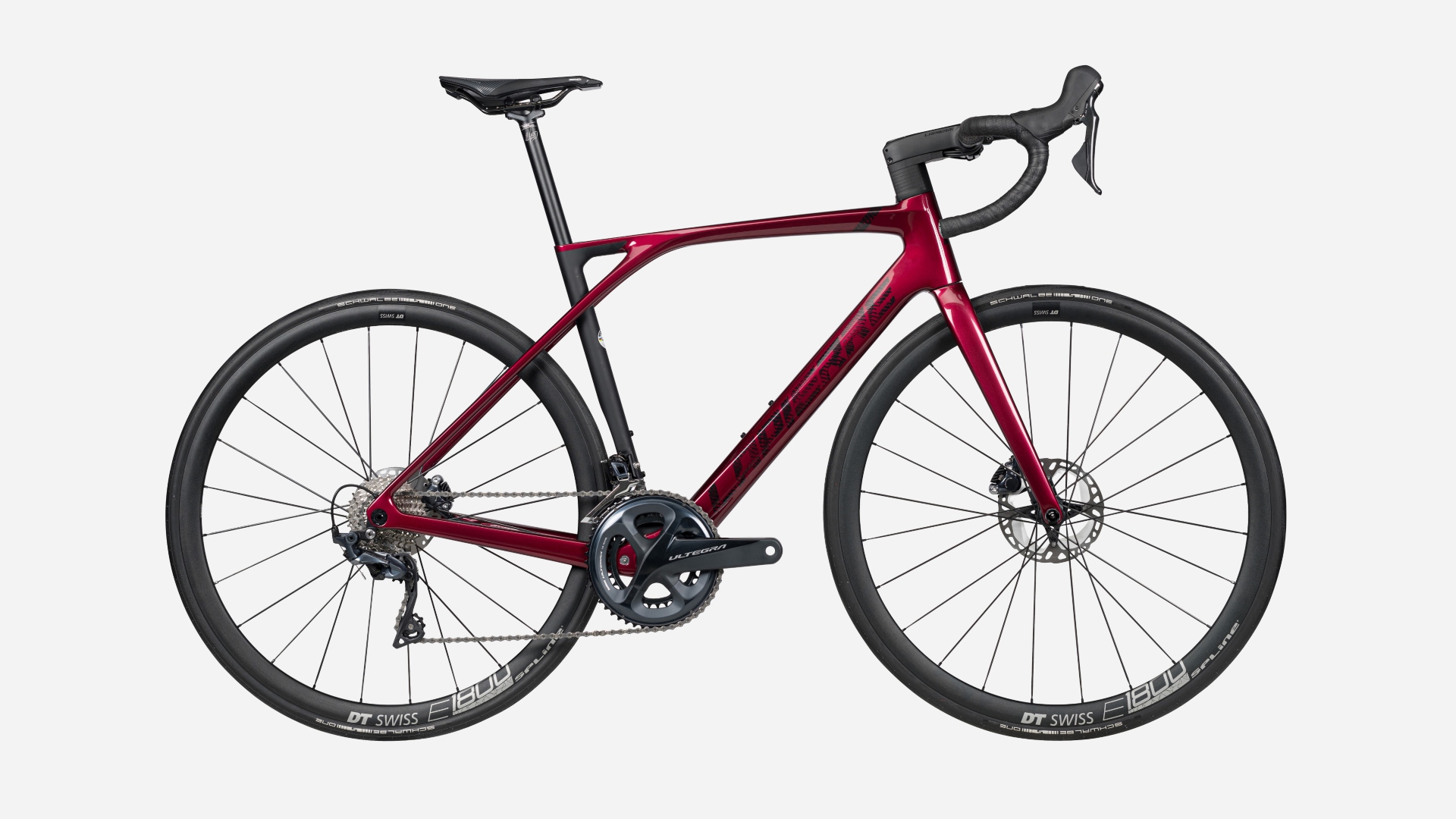
French brand Lapierre has released the 2022 edition of its signature road bike, the Xelius.
First launched in 2010, the latest Xelius SL, now in its third generation, is the lightest yet, despite it being disc-brake only.
Lapierre says that while the Xelius maintains the bike’s original philosophy of being its most versatile road bike, the new SL3 is designed to be “more racy, more aggressive and more powerful.”
Working closely with WorldTour team Groupama-FDJ has pushed the design to incorporate the demands of the best riders, with Lapierre crediting improvements in key areas such as weight, aerodynamics and rigidity.

Significantly reducing the weight of the frame is no easy task and to achieve this Lapierre has opted for a new carbon construction. The Xelius is now made using lighter and stronger Torayca carbon fibres, which Lapierre uses in conjunction with its new UD Super Light Innovation carbon technology.
In real terms this means a fresh approach was taken. Lapierre used a new “rigid polypropylene mandrel”, which they believe offers improved stability during the lay-up phase as well as “better compression of the carbon piles in the mold”. The result is increased uniformity across the compressed fibres, which in turn ejects more resin thus reducing the overall weight.
So what does this mean for the finished product?
The latest race content, interviews, features, reviews and expert buying guides, direct to your inbox!
Interestingly Lapierre has chosen to optimise the lay-up based on the frame size. The XS, S and M frameset gets the brand’s ‘Light’ level, while the L and XL gets the ‘Stiff’. However, all complete bikes use the ‘Standard’ lay-up, which is a tad heavier.
On the scales, claimed weights for the ‘Light’ frame is 725g while the ‘Stiff’ is 745g. The ‘Standard’ frame comes in at 845g. The fork is matched to the specific frame, with a 352g model for the ‘Light’ and ‘Stiff’ framesets and a 392g fork paired with the ‘Standard’ frame. That means in its lightest form you’re getting a frameset that weighs just over 1kg. In comparison the SL2 weighed 957g for the frame alone.

But, as Lapierre is quick to point out, weight reduction isn’t everything. It’s increased the size of the bike’s down tube and its head tube - it now uses 1.5” bearings - as well as the bottom bracket shell and the chainstays. The stated aim? To increase stiffness where it matters yet add "softness" to the bottom bracket for a more responsive feel.
Lapierre feels that it’s achieved this balance with the new SL3, claiming that it made noticeable improvements in both areas when compared to the SL2. In fact, Lapierre claims that the SL3 in its ‘Standard’ guise is as stiff as the previous SL2 Team model.
So what else is new?
The Xelius SL3 is on trend by incorporating improved aerodynamics into its frame design. Down tube, seat tube and seat stays have all been redesigned, as has the aero profile of the head tube and forks. Combine this with integrated brake lines and hoses and a more compact frame design in general and you get some pretty impressive gains if Lapierre’s numbers are on the money.
Through extensive wind tunnel testing it claims to have calculated the new SL3 to be more aero than the SL2 across varying wind angles and speeds and the faster the Xelius SL3 goes the bigger those gains are: 1% difference at 40km/h compared with 8.5% at 60km/h.
That last figure equates to some 22 watts, although at this speed it's probably more beneficial to the likes of Arnaud Démare and Thibaut Pinot than it is to us mere mortals.

The new compact frame design borrows its geometry from Lapierre’s Aircode DRS frame that’s favoured by its sprinters and rouleurs, such as Démare and Jake Stewart. It believes this will make the Xelius SL3 better on fast descents, thanks to a lower centre of gravity. In terms of numbers the SL3’s top tube is -2 to -4mm shorter than the SL2 while being 3cm more sloping.
Other trends have been incorporated into the SL3. It now offers 32mm tyre clearance as well adopting the 27.2mm seatpost standard. Both point to improved compliance and a generally more comfy ride than its predecessor.

So what are the build options for the new Xelius SL3?
Lapierre’s choice of components points to a frameset that’s pretty versatile, equipped to work across a range of budgets.
At the lower end there is the Xelius SL3 5.0, which comes with a Shimano 11-speed 105 groupset and retails at £2,699. The top-tier offering, the SL3 9.0 is equipped with Shimano Dura-Ace Di2 and an in-house carbon wheelset and will set you back £6,999.
That leaves the 6.0, the 7.0 and the 8.0 to fill the gaps, with Ultegra and Ultegra Di2 used across these models. The 8.0 benefits from the same carbon wheelset as the 9.0, while the others use DT Swiss’ E1800 wheels. Prices are £3,199, £4,399 and £5,399 respectively.
If you’re interested in using the Xelius SL3 as the centrepiece of a dream bike build then the frameset is available for £2,799 and decked out in Groupama-FDJ livery.
For more details on the new Xelius SL3 visit lapierrebikes.com
Luke Friend has worked as a writer, editor and copywriter for over twenty five years. Across books, magazines and websites, he's covered a broad range of topics for a range of clients including Major League Baseball, Golf Digest, the National Trust and the NHS. He has an MA in Professional Writing from Falmouth University and is a qualified bicycle mechanic. He has been a cycling enthusiast from an early age, partly due to watching the Tour de France on TV. He's a keen follower of bike racing to this day as well as a regular road and gravel rider.